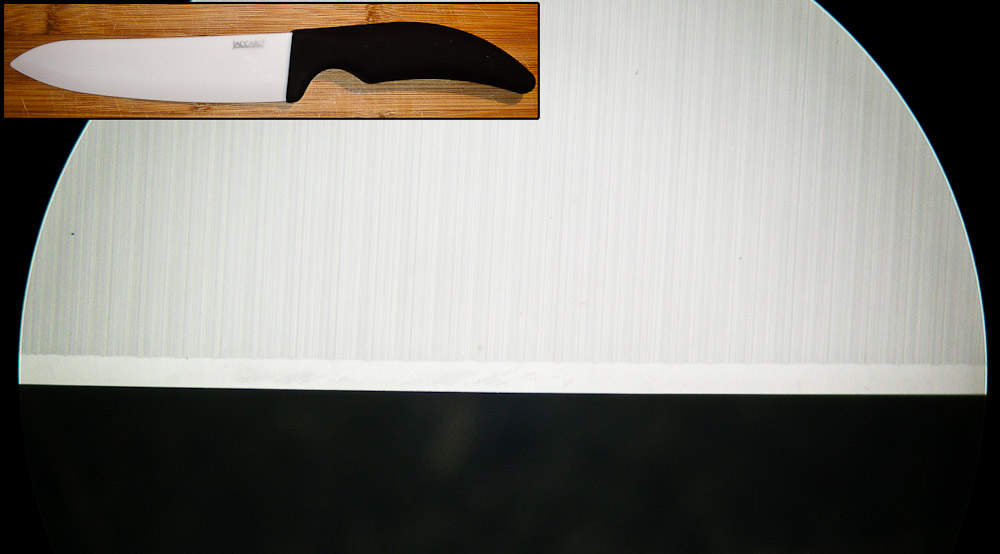Equipment & Gear
Tabular Recipe Notation Patent Pending (Michael Chu)

| Books | Cooking Tests | Dining Out | Equipment & Gear | Kitchen Notes | Off Topic | Recipe File | Sous Vide | Test Recipes |
| Bacon (Part I) | Beer Can Chicken | HFCS-Free Cream Sodas | Soft Boiled Eggs |
| Bacon (Part II) | Eggplant Taste Test |
| Table of Contents | Forums | Dictionary | Recommended Reading | Marketplace | Giftshop | What I Ate | Michael's Blog |
| About CfE | Contact | User Agreement | Privacy Policy | FAQ's | In the Press | Write for CfE |


This not only affects grip-to-blade angle, but generally the grind and the cross section of the grind/bevel as well.
I'm curious if it would be possible to repeat the test by isolating the french-pattern and santoku-pattern knives with a steel control for each. Alternatively, giving some description of the edge bevel for each might also provide some insight into the relative chop-versus-slice performance for each blade.
I can see how the tip on a traditional chef's knife might be more prone to breaking, but can't think of any other rationale besides marketing.
I tried a Santoku style once and hated it, yet still want to play with a ceramic some time. I guess a Kyocera paring knife is my future.
Great review -- thanks for the hard work!
Personally, I'd rather have wood handles. It's not like people who buy $50+ ceramic knives do so because they can thrown them in the dishwasher.
Two of them have now chipped endpoints due to accidental dropping. The newest ones have a lot more sharp (different sharpening production tecnique) but also a lot more brittle blades. The oldest one, a Cerastar knife, even if dulled with use and chipped, is still sharp enough to serve everyday usage.
The white blades get stained very easily when you cut artichokes or carrots, and every now and then I clean them with a concentrated bleach solution.
Paring knife, short chef knife, and veg peeler.
They are very light and very sharp. The first week or more that you use it, the light weight of the knife is jarring. I got used to it. Now I switch between ceramic and metal without thinking.
The paring knife is great.
The chef knife is fine, but is quite delicate. I have dropped mine a couple of times and the tip has broken off. It still works, but the lack of tip throws off the balance.
Consider ceramic knives for chopping veg or precision slicing duties.
If you are hacking & prying or cutting up something really heavy (like maybe a pumpkin), stick with steel.
The veg peeler is useless. It just doesn't work.
I also prefer the blade in line with the handle, not perpedicular like the Kyocera.
Paring knife, short chef knife, and veg peeler.
...
The veg peeler is useless. It just doesn't work.
I also prefer the blade in line with the handle, not perpedicular like the Kyocera.
I bought a Kyocera paring knife and Vertical peeler and find I prefer my metal paring knife but just LOVE the peeler. One thing I've learned it that you occasionally need to spray the peeler with Easy-Off and scrub it with a toothbrush, else the ceramic gets sticky and doesn't work as well.
Personally, I'd rather have wood handles. It's not like people who buy $50+ ceramic knives do so because they can thrown them in the dishwasher.
I like also wood handle knives. I felt more comfortable with them. Ceramic handles are ok but I felt its more slippery to handle than the wood handle. Anyway its my only opinion.
B)